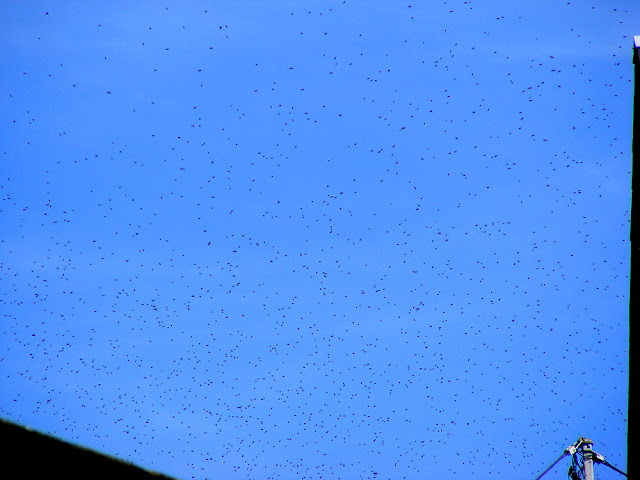The Chateau of Chenonceau has installed a teaching hive. It was designed and made in France and is called the BEE-PASS®.
The bees come and go via a chimney, so that they are elevated safely above peoples' heads, three metres above the ground. The bees can be observed without disturbing their activities, through special windows in the main hive.
The hive has been designed not just for its teaching opportunities, but because it can be installed in urban environments safely and without breaching the Code rural (a national law which covers everything from public safety to aesthetics).
The hive is made from French grown Douglas pine and all the metal fixings and hinges are stainless steel. The wooden parts are fixed into a robust metal frame set into a concrete slab and the roof has a painted metal outer skin. Windows in toughened glass are protected with padlocked 20mm thick wooden shutters.
The design is ergonomic, so the hive itself is set at a height for ease of working with it.
*************************************
It is honey bee swarming season here at the moment. A few days ago one went over our house. I heard it coming across our neighbour's yard when I was hanging out some washing so I rushed inside to get the camera. I nearly missed them -- they were on a mission and heading up the hill and over our neighbour's the other side. In past years swarms have stopped off to investigate our downstairs toilet ventilation fan outlet and had to be dissuaded. Other times they've chosen the stable now garage hayloft.
************************************************
For details of our private guided tours of chateaux, gardens, wineries, markets and more please visit the Loire Valley Time Travel website. We would be delighted to design a tour for you.
We are also on Instagram, so check us out to see a regularly updated selection of our very best photos.
We are also on Instagram, so check us out to see a regularly updated selection of our very best photos.



4 comments:
Wow, that is interesting. Happy Friday, Diane
A good initiative I think.
We have a lot of hives in the area but I have never seen a swarm.
I did however, just get rid of the yearly wasp nest being built in our post box...
I generally see a swarm about once a year, in May or June. Sometimes like the one above, on the move, sometimes all huddled together on a tree branch waiting for the scouts to come back with news of a new home.
Post a Comment